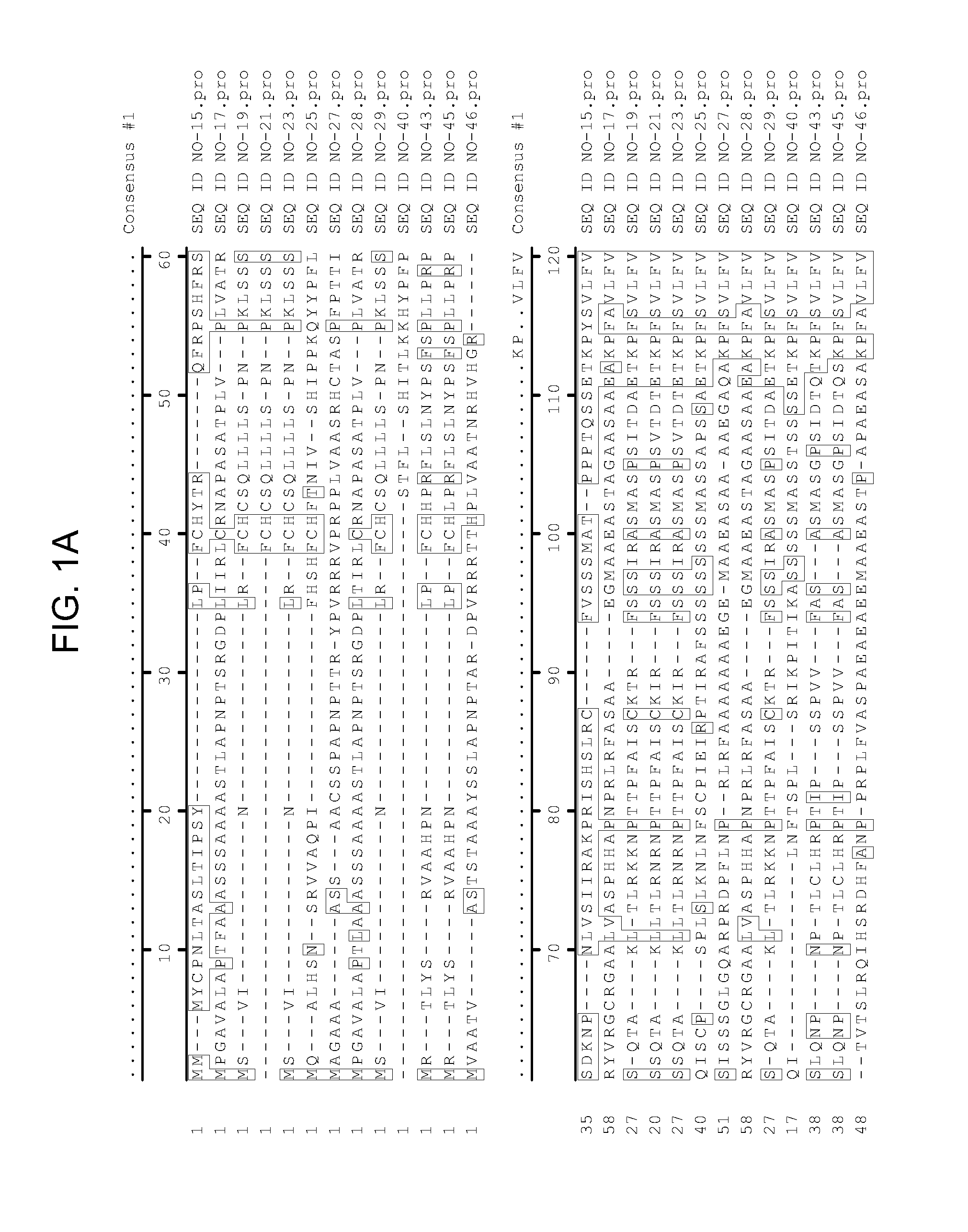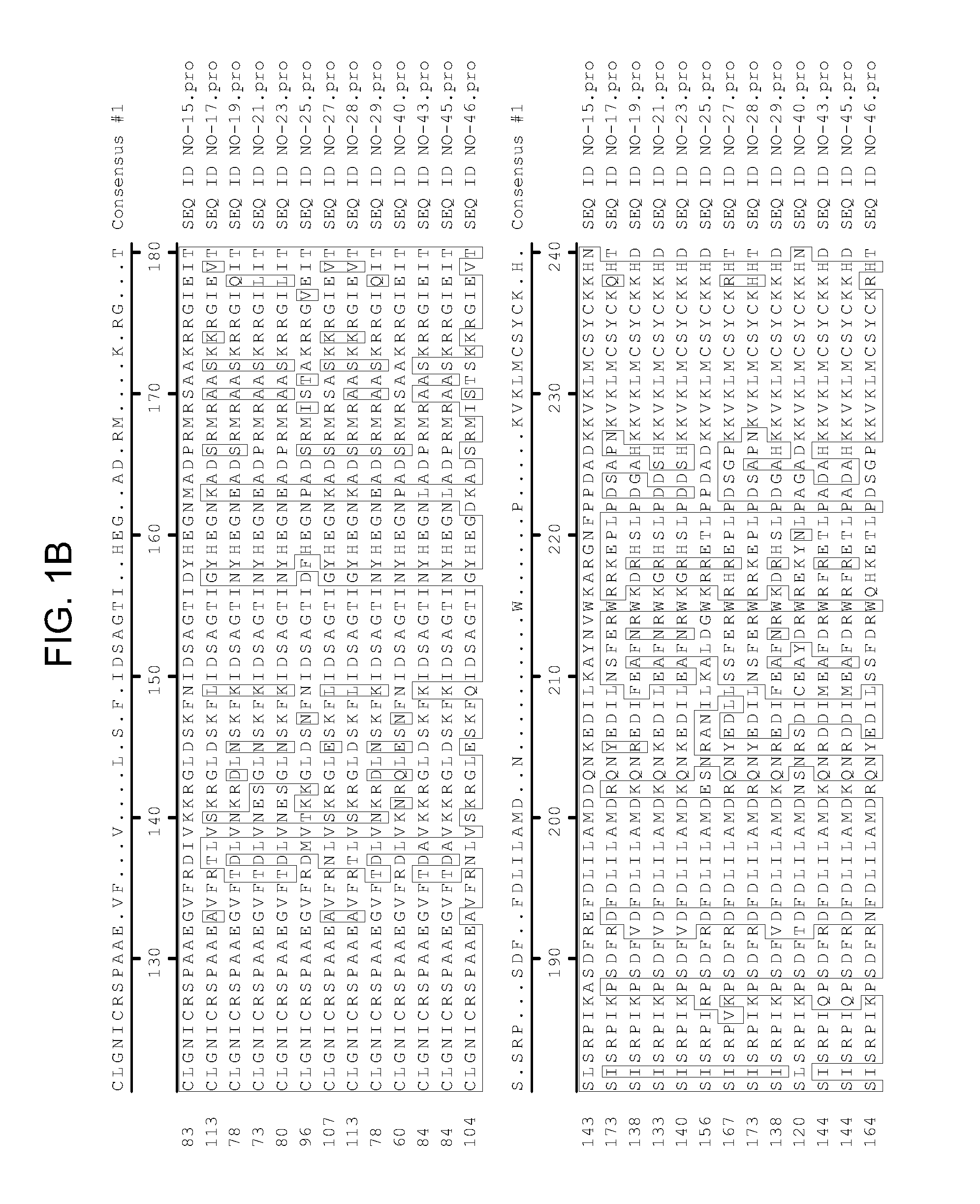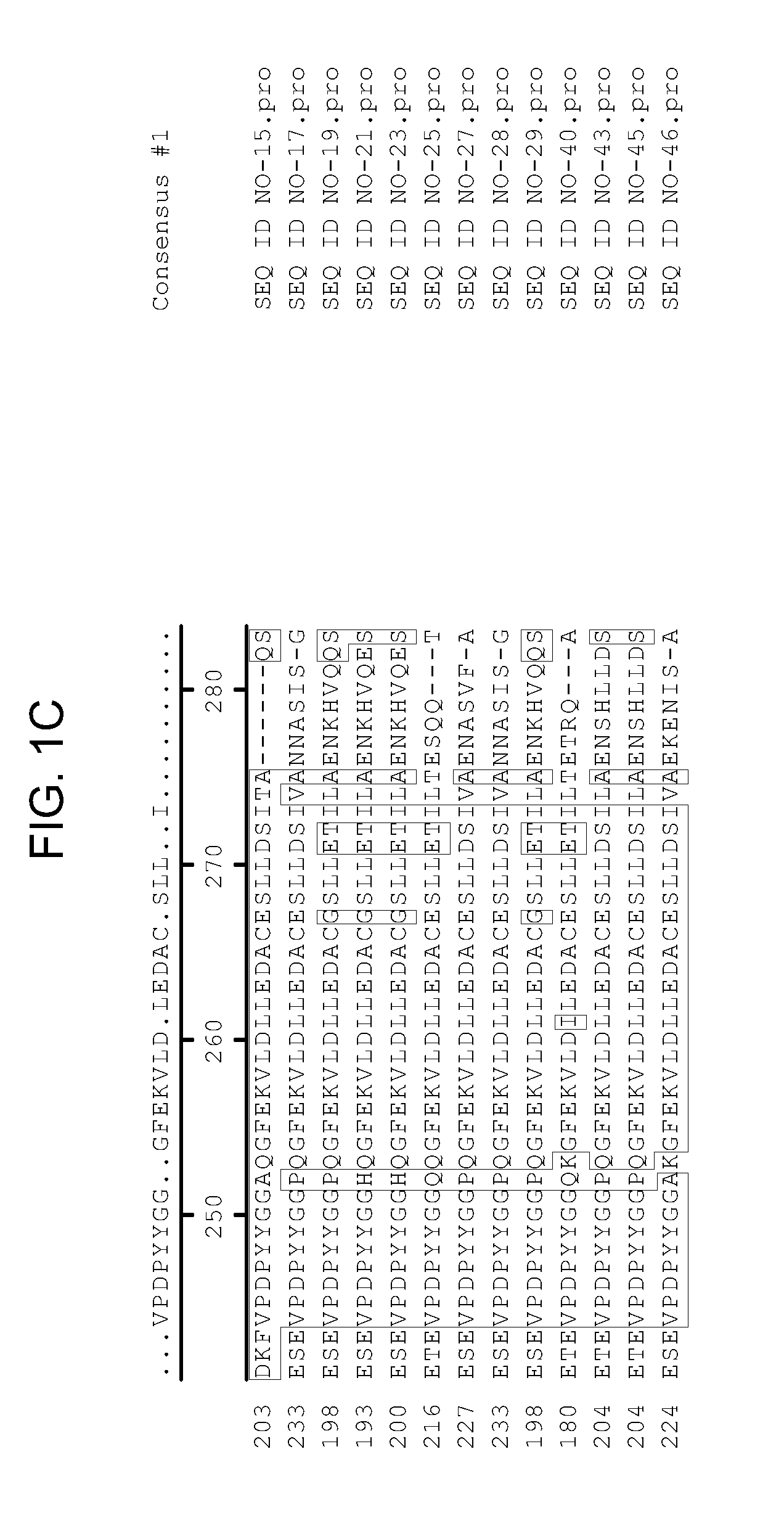Drought tolerant plants and related constructs and methods involving genes encoding protein tyrosine phosphatases
- Summary
- Abstract
- Description
- Claims
- Application Information
AI Technical Summary
Benefits of technology
Problems solved by technology
Method used
Image
Examples
example 1
Creation of an Arabidopsis Population with Activation-Tagged Genes
[0219]An 18.5-kb T-DNA based binary construct was created, pHSbarENDs2 (SEQ ID NO:1), that contains four multimerized enhancer elements derived from the Cauliflower Mosaic Virus 35S promoter (corresponding to sequences −341 to −64, as defined by Odell et al., Nature 313:810-812 (1985)). The construct also contains vector sequences (pUC9) and a polylinker to allow plasmid rescue, transposon sequences (Ds) to remobilize the T-DNA, and the bar gene to allow for glufosinate selection of transgenic plants. In principle, only the 10.8-kb segment from the right border (RB) to left border (LB) inclusive will be transferred into the host plant genome. Since the enhancer elements are located near the RB, they can induce cis-activation of genomic loci following T-DNA integration.
[0220]Arabidopsis activation-tagged populations were created by whole plant Agrobacterium transformation. The pHSbarENDs2 construct was transformed into...
example 2
Screens to Identify Lines with Enhanced Drought Tolerance
[0221]Quantitative Drought Screen: From each of 96,000 separate T1 activation-tagged lines, nine glufosinate resistant T2 plants are sown, each in a single pot on Scotts® Metro-Mix® 200 soil. Flats are configured with 8 square pots each. Each of the square pots is filled to the top with soil. Each pot (or cell) is sown to produce 9 glufosinate resistant seedlings in a 3×3 array.
[0222]The soil is watered to saturation and then plants are grown under standard conditions (i.e., 16 hour light, 8 hour dark cycle; 22° C.; ˜60% relative humidity). No additional water is given.
[0223]Digital images of the plants are taken at the onset of visible drought stress symptoms. Images are taken once a day (at the same time of day), until the plants appear dessicated. Typically, four consecutive days of data is captured.
[0224]Color analysis is employed for identifying potential drought tolerant lines. Color analysis can be used to measure the i...
example 3
Identification of Activation-Tagged Genes
[0229]Genes flanking the T-DNA insert in drought tolerant lines are identified using one, or both, of the following two standard procedures: (1) thermal asymmetric interlaced (TAIL) PCR (Liu et al., (1995), Plant J. 8:457-63); and (2) SAIFF PCR (Siebert et al., (1995) Nucleic Acids Res. 23:1087-1088). In lines with complex multimerized T-DNA inserts, TAIL PCR and SAIFF PCR may both prove insufficient to identify candidate genes. In these cases, other procedures, including inverse PCR, plasmid rescue and / or genomic library construction, can be employed.
[0230]A successful result is one where a single TAIL or SAIFF PCR fragment contains a T-DNA border sequence and Arabidopsis genomic sequence.
[0231]Once a tag of genomic sequence flanking a T-DNA insert is obtained, candidate genes are identified by alignment to publicly available Arabidopsis genome sequence.
[0232]Specifically, the annotated gene nearest the 35S enhancer elements / T-DNA RB are can...
PUM
| Property | Measurement | Unit |
|---|---|---|
| Fraction | aaaaa | aaaaa |
| Fraction | aaaaa | aaaaa |
| Mass | aaaaa | aaaaa |
Abstract
Description
Claims
Application Information
 Login to View More
Login to View More - R&D
- Intellectual Property
- Life Sciences
- Materials
- Tech Scout
- Unparalleled Data Quality
- Higher Quality Content
- 60% Fewer Hallucinations
Browse by: Latest US Patents, China's latest patents, Technical Efficacy Thesaurus, Application Domain, Technology Topic, Popular Technical Reports.
© 2025 PatSnap. All rights reserved.Legal|Privacy policy|Modern Slavery Act Transparency Statement|Sitemap|About US| Contact US: help@patsnap.com



